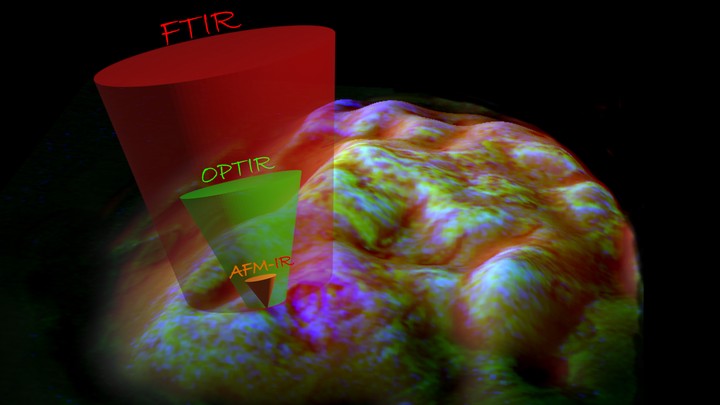Comparing infrared spectroscopic methods for the characterization of Plasmodium falciparum-infected human erythrocytes
 Comparison of spatial resolution for FTIR, O-PTIR and AFM-IR
Comparison of spatial resolution for FTIR, O-PTIR and AFM-IRAbstract
Malaria, caused by parasites of the species Plasmodium, is among the major life-threatening diseases to afflict humanity. The infectious cycle of Plasmodium is very complex involving distinct life stages and transitions characterized by cellular and molecular alterations. Therefore, novel single-cell technologies are warranted to extract details pertinent to Plasmodium-host cell interactions and underpinning biological transformations. Herein, we tested two emerging spectroscopic approaches: (a) Optical Photothermal Infrared spectroscopy and (b) Atomic Force Microscopy combined with infrared spectroscopy in contrast to (c) Fourier Transform InfraRed microspectroscopy, to investigate Plasmodium-infected erythrocytes. Chemical spatial distributions of selected bands and spectra captured using the three modalities for major macromolecules together with advantages and limitations of each method is presented here. These results indicate that O-PTIR and AFM-IR techniques can be explored for extracting sub-micron resolution molecular signatures within heterogeneous and dynamic samples such as Plasmodium-infected human RBCs.